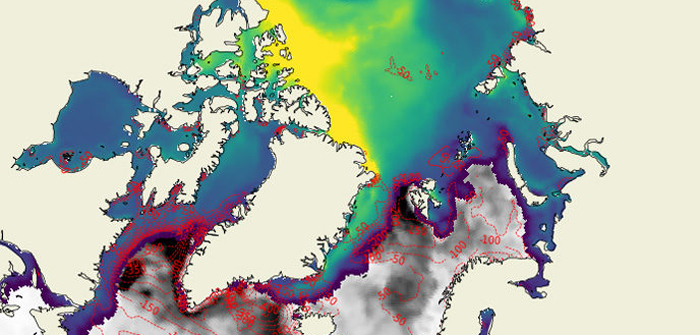European meteorologists are expanding their scope of forecasting of ocean and sea ice conditions by adding nine new variables to an important weather database.
The new variables have been added to the multi-model sub-seasonal to seasonal (S2S) weather prediction database hosted the European Centre for Medium-Range Weather Forecasts (ECMWF).
The S2S database, first launched in 2015, leverages data from 11 forecasting centers to create ensemble forecasts for up to 60 days ahead.
Until now the database contained only two ocean and sea ice variables: sea-surface temperature and sea ice cover.
But since the new year nine new ocean and sea ice parameters have been added. They include mean sea-level potential temperature and practical salinity down to a depth of 300 meters, sea-surface height and practical salinity, and sea ice thickness.
“The new variables will help researchers to explore the predictability of ocean and sea ice conditions and to compare the representation of air–ocean–sea ice interactions in different models,” said ECMWF scientist Frederic Vitart.
The new variables are currently only available for ECMWF forecasts three weeks behind real time. In the coming weeks, however, they will be integrated into the models of three more forecasting centers globally: Environment and Climate Change Canada (ECCC), the China Meteorological Administration (CMA) and CNRM (Météo-France/Centre National de Recherches Météorologiques – the French national research center for meteorology).
The S2S database uses ensemble forecast data from 11 centers worldwide in North America, Europe and Asia. The data is archived at ECMWF and CMA with a large subset also archived at the data library at the US International Research Institute for Climate and Society (IRI) at New York’s Columbia University.
To find out more, click here.



